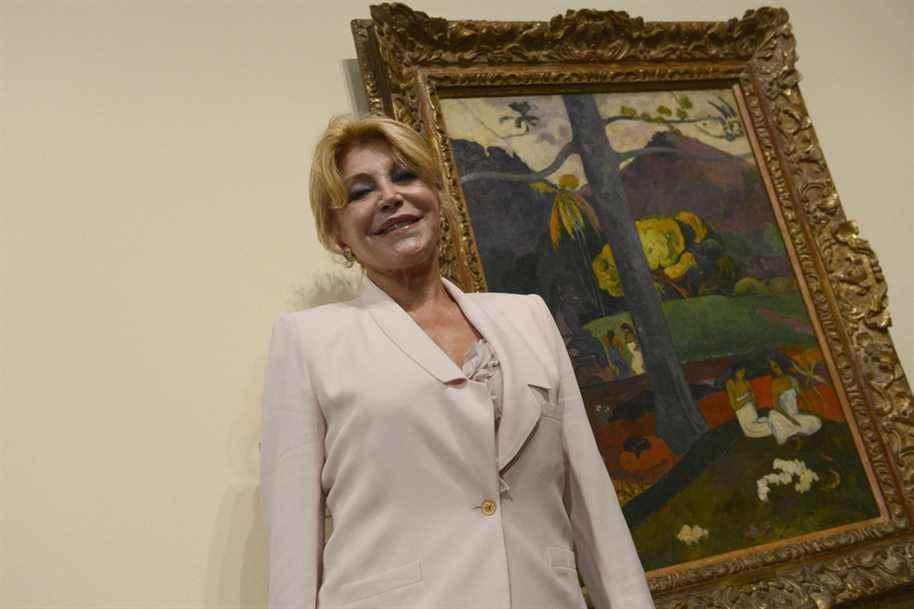(Madrid) The Mata Mua, one of the most famous paintings by French painter Paul Gauguin (1848-1903), will return to the Thyssen-Bornemisza Museum in Madrid on Monday, as part of a rental agreement between the Spanish government and its owner, who had brought the canvas out of the country.
Posted at 12:07 p.m.
“The painting is expected to arrive today,” a museum spokeswoman told AFP on Monday, adding that the public could see the painting again “in the days following” the signing scheduled for Wednesday. of the agreement between the State and Carmen Thyssen, the owner of the work.
In the spring of 2020, when the museum was closed due to the COVID-19 pandemic, Carmen Thyssen took the painting, which had been exhibited there for twenty years, to Andorra, a microstate located in the Pyrenees where she resides.
A decision which for a time raised fears that other works by the collector would in turn leave the institution.
But in August 2021, the Spanish Ministry of Culture announced that it had reached an agreement with Carmen Thyssen for the rental for an amount of 97.5 million euros over 15 years of its collection of several hundred works, some of which by Picasso, Matisse, Gauguin, Monet, Renoir, Sisley, Rodin, Canaletto, Fragonard, Courbet and Boudin.
This contract provides for “preferential acquisition rights over all or part” of his works.
Previously, these works were exhibited at the Thyssen Museum under a free loan agreement signed in February 2002 and subsequently extended.
Mata Mua, the jewel of this collection, is a work painted by Paul Gauguin in 1892, during his first trip to Tahiti.
The canvas shows an idyllic landscape of the Polynesian island, with in the foreground two young girls, one of whom plays the flute, and in the second, three others dancing around a stone colossus representing the moon goddess Hina .
Beyond the collection of Carmen Thyssen, the National Thyssen-Bornemisza Museum mainly houses the collection of her husband, the Swiss Hans Heinrich Thyssen-Bornemisza, heir to a powerful industrial line and who died in Spain in 2002. The Spanish State bought the collection in 1993 for $350 million, according to the museum.
